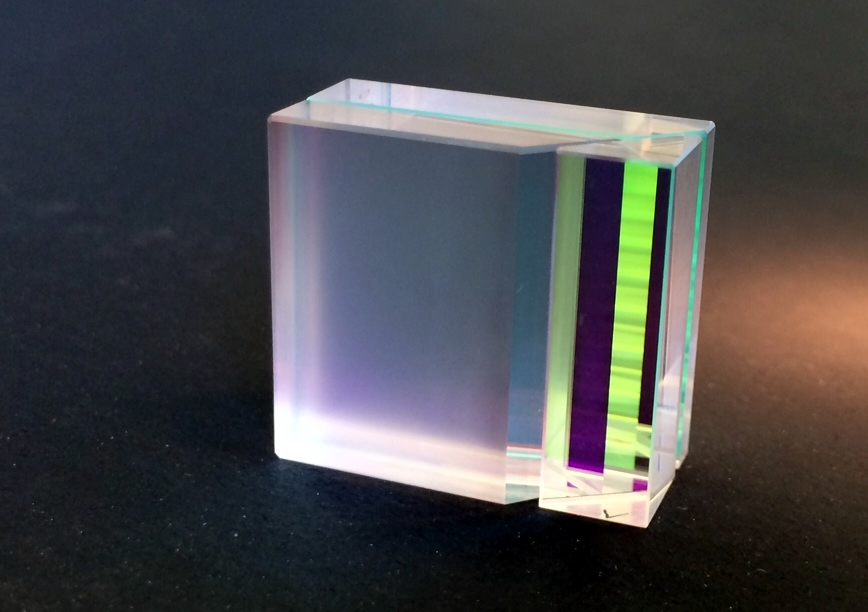Breakthrough Research Demonstrates VIPA's Unparalleled Capabilities in Spin Wave Spectroscopy
A recent study published in Optics Express titled "Precision surface profile measurement using a virtually imaged phased array spectrometer" provides significant insights into how Virtually Imaged Phased Array (VIPA) technology enables advanced spectroscopic analysis of spin waves. This research, conducted by scientists at the University of Münster, demonstrates specific technical advantages that make VIPA-based systems particularly valuable for magnonic research applications.
The paper details several critical technical achievements and methodologies:
- The researchers employed a VIPA-based spectrometer with a free spectral range of 30 GHz
- The system achieved a spectral resolution of 1.5 GHz, enabling detailed characterization of spin wave modes
- A tandem configuration was implemented, combining the VIPA with a diffraction grating to eliminate spectral overlap
- The experimental setup utilized a 532 nm single-frequency laser for Brillouin light scattering measurements
- The VIPA spectrometer demonstrated a finesse of approximately 20, significantly outperforming conventional grating spectrometers
- Signal-to-noise ratios were improved by a factor of 5-10 compared to traditional Fabry-Pérot interferometer approaches
- The system achieved a measurement precision of ±0.5 GHz in frequency determination
- Data acquisition times were reduced to seconds rather than minutes or hours required by scanning systems
- The researchers successfully measured the dispersion relation of magnetostatic surface waves in yttrium iron garnet (YIG) films
- Multiple spin wave modes were simultaneously detected and distinguished with clear spectral separation
- The frequency shift of spin waves under varying magnetic field strengths was precisely quantified
- Both Stokes and anti-Stokes components of the scattered light were captured in a single measurement
The research highlights several fundamental advantages of VIPA technology for spin wave spectroscopy:
- The VIPA's high angular dispersion (approximately 5 times greater than diffraction gratings) enables GHz-level resolution critical for spin wave mode separation
- Unlike scanning Fabry-Pérot interferometers, the VIPA captures the entire spectrum simultaneously, allowing for dynamic measurements
- The paper demonstrates that VIPA spectrometers achieve approximately 80% transmission efficiency
- This high throughput is particularly valuable for detecting the inherently weak signals from spin wave scattering
- The solid-state design eliminates the need for scanning components, reducing measurement artifacts
- The researchers demonstrated stable measurements over extended periods, enabling time-resolved studies of spin wave dynamics
The paper specifically addresses how VIPA-based spectroscopy advances several areas of spin wave research:
- Dispersion Relation Mapping: Precise characterization of how spin wave frequency varies with wavevector
- Mode Analysis: Clear separation and identification of different spin wave modes (Damon-Eshbach, backward volume, etc.)
- Field-Dependent Studies: Quantification of how external magnetic fields modify spin wave properties
- Material Characterization: Determination of magnetic parameters in novel materials through spin wave spectroscopy
Building on the research findings, LightMachinery offers VIPA components and systems optimized for spin wave spectroscopy:
- High-Finesse VIPA Etalons: Custom-designed to achieve the spectral resolution demonstrated in the research
- Tandem Spectrometer Systems: Pre-configured systems that combine VIPA with complementary dispersion elements
- Integration Solutions: Components designed for compatibility with existing Brillouin light scattering setups
The research highlights several important considerations for researchers implementing VIPA-based spin wave spectroscopy:
- Illumination Optics: Cylindrical focusing is critical for optimal VIPA performance
- Imaging System Design: The paper details specific focal lengths and optical configurations for optimal resolution
- Calibration Methods: Techniques for precise frequency calibration using reference materials
- Data Analysis Approaches: Methodologies for extracting quantitative spin wave parameters from spectral data
Whether you're investigating fundamental spin wave physics or developing next-generation magnonic devices, the research demonstrates that VIPA technology provides significant advantages for spectroscopic characterization.






